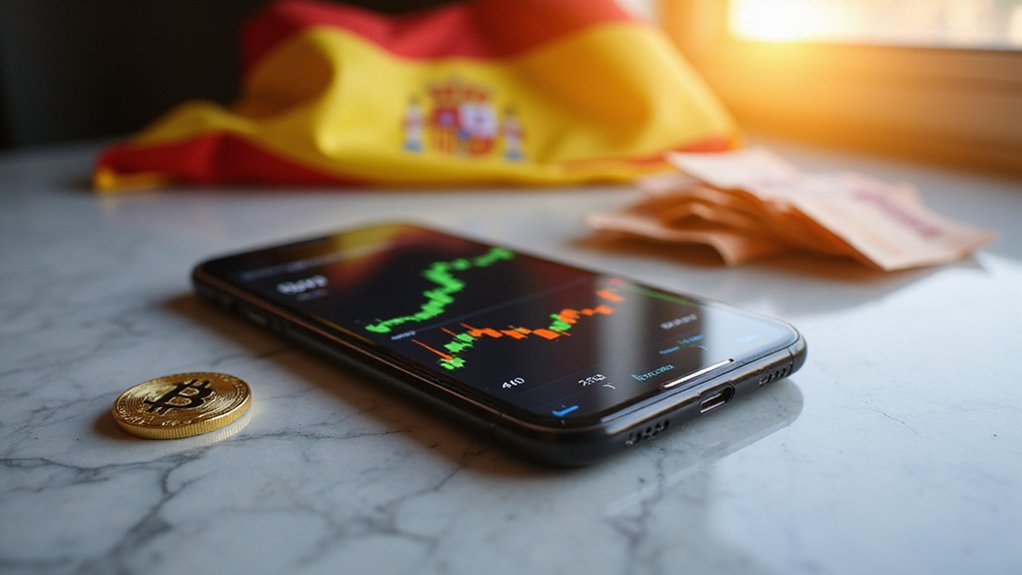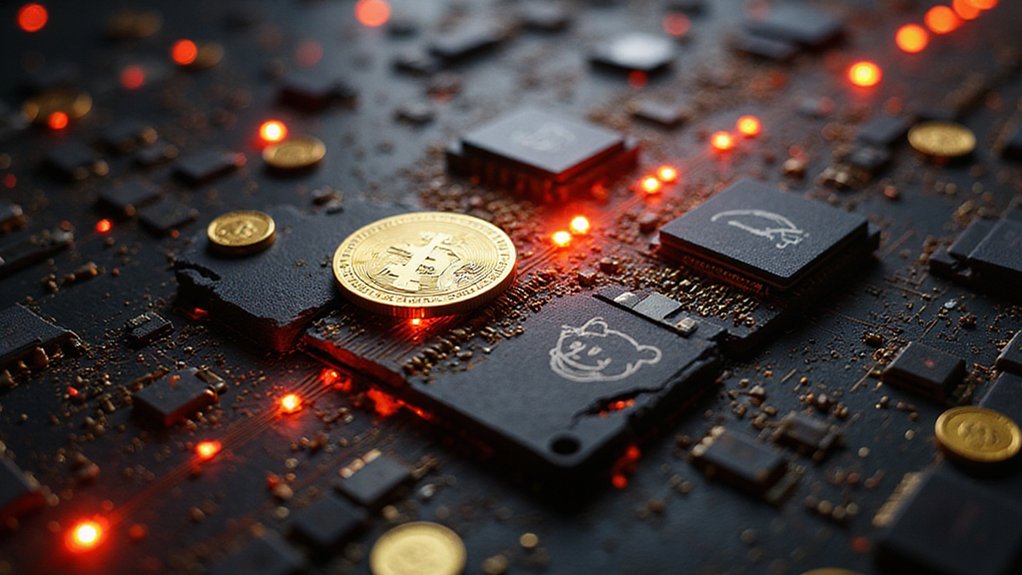While cryptocurrency enthusiasts once dismissed artificial intelligence as merely another tech buzzword destined for the venture capital graveyard, the convergence of AI and blockchain technology has evolved into something far more substantive—and potentially transformative—than the typical Silicon Valley fever dream.
The marriage of these technologies has produced AI-driven optimization systems that enhance transaction speeds while reducing operational costs across blockchain networks. Machine learning models now predict market trends with remarkable accuracy, automating complex transactions through intelligent contracts that require minimal human oversight. These systems simultaneously strengthen security protocols by detecting fraud and anomalies before they metastasize into larger problems.
Perhaps more intriguingly, a new breed of AI-powered cryptocurrencies has emerged, challenging the traditional dominance of Bitcoin and Ethereum. Artificial Superintelligence Alliance (ASI) emphasizes decentralized AI infrastructure, while Numeraire (NMR) leverages artificial intelligence for encrypted data crowdsourcing in hedge fund strategies. Cortex (CTXC) enables on-chain execution of AI models, and Velas (VLX) integrates AI to optimize blockchain scalability—each contributing to increased decentralization and efficiency.
This market shift toward AI-driven crypto projects reflects investor appetite for real-world applications beyond speculative trading. Platforms like Web3 ai provide thorough trading assistance, portfolio tracking, and scam detection by integrating data from multiple blockchains including Ethereum, BNB, Solana, and Polygon. The project’s presale success—over 23.7 billion tokens sold, raising $8.6 million—demonstrates substantial investor confidence in AI-crypto convergence. The AI-token market’s explosive growth from $2.7 billion in April 2023 to over $39 billion showcases the market value trajectory of this technological fusion.
Beyond mere transactional improvements, AI tokens are reshaping ecosystem governance and scalability. These tokens incentivize computation through sharding techniques (as seen with NEAR Protocol), facilitate decentralized marketplaces, and support sophisticated portfolio management systems. Token holders often receive governance rights, enabling community-led protocol development.
The predictive analytics revolution has introduced autonomous AI agents capable of executing transactions and managing assets independently on blockchain networks. These systems predict market volatility with superior accuracy compared to traditional methods, while continuously scanning transactions for suspicious behavioral patterns. The sector’s potential to add $20 trillion to global GDP by 2030 underscores the transformative economic impact of AI-blockchain convergence.
Machine learning algorithms now identify and mitigate new fraud types faster than manual detection methods, creating a more secure trading environment where decentralized AI marketplaces enable monetization of AI models and datasets. These AI cryptocurrencies facilitate data analysis, predictive modeling, and automation to enhance decision-making across various industries.









